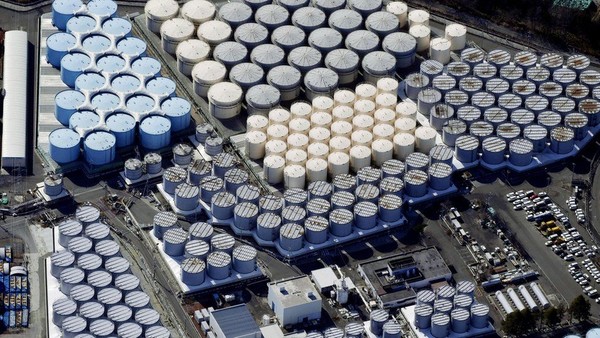Japan intends to filter and dilute the contaminated water and gradually release it into the Pacific Ocean for the next 30 years starting from August 24. This dispersed water is likely to be influenced by various oceanic currents, which determine the movement and distribution of water in the Pacific Ocean. Discussions about the potential reach of contaminants has sparked global apprehensions.
Following the Tohoku earthquake and tsunami in 2011, a number of reactors at the Fukushima Daiichi nuclear power plant went into meltdown. To prevent any additional radiation leak and manage the intense heat from the reactor core, Tokyo Electric Power Company (TEPCO), a power plant company, has been pumping water into the reactors. The water quickly became contaminated with radioactive materials, primarily from the damaged fuel rods. Today, even though the reactors are offline, they continue to generate heat and require constant cooling. This continuous procedure is causing a buildup of contaminated water to the extent that it fills over 1000 tanks, equivalent to the volume of over 100 Olympic-sized swimming pools.

The contaminated water includes 64 radioactive elements, known as radionuclides. Out of these, several including carbon-14, iodine-131, cesium-137, strontium-90, cobalt-60, and hydrogen-3 (tritium) are particularly concerning due to their potential threats to human health. While some radionuclides, like iodine-131, have a short half-life and have likely decayed since the disaster, others such as carbon-14 can persist for over 5,000 years due to its long half-life.
The contaminated water is treated using TEPCO’s advanced liquid-processing system (ALPS). This sophisticated method involves five stages, including co-sedimentation, absorption, and physical filtration, which effectively reduces the concentration of 62 out of the 64 radionuclides to the level below Japan’s 2022 regulatory limits for environmental discharge. However, two elements, carbon-14 and tritium, remain. To manage these, the water is further diluted to ensure the concentration of tritium is about one-seventh of the World Health Organization’s guidelines for drinking water. The concentration of carbon-14 will also decrease substantially through dilution before being released.
A safety review by the International Atomic Energy Agency (IAEA) has affirmed that Japan’s proposal aligns with the global IAEA Safety Standards. After an intensive two-year review by a specialized IAEA Task Force and multiple on-site missions, the consensus is that the discharge would have a minimal radiological impact on the environment and humans. IAEA states that it will continue its oversight with transparency, providing live online monitoring throughout the discharge process.
However, the Japanese government’s decision faces significant opposition from the country. A survey from August by the newspaper Asahi Shimbun revealed that 53% of respondents supported the decision, while 41% opposed. There was a marginal increase in support from the previous survey in July, which had 51% in favor and 40% opposed. The major source of opposition is the Japanese fishing organization. They fear that the release might further damage the reputation of their seafood, which is still recovering from the 2011 nuclear disaster. In fact, following the announcement of the planned water release, Japanese fish exports saw a decline of 23.3%. Nevertheless, the government’s stance is clear: the release is crucial for the decommissioning of the plant and to avoid accidental spills from filled-up tanks.
Fukushima’s contaminated water challenge underlines the lasting impact of the 2011 nuclear disaster. While advanced treatment ensures minimal environmental risk, it does not satisfy the public. Balancing safety with economic impact remains a delicate task for Japan, with long-term effects still unfolding.

